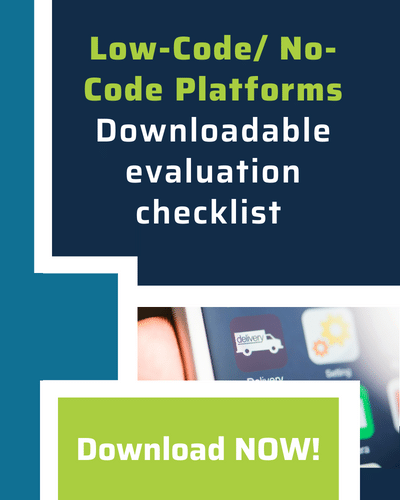Who is Villara Building Systems?
Villara Building Systems was originally founded in 1947 as Beutler Heating and Air Conditioning. Today, it offers a wide range of building services, from heating and cooling to plumbing and solar installations, for residential, multifamily and commercial properties. With a history of innovation, starting with the think tank atmosphere original founder Del Beutler ingrained in the company culture, whether it was improving the efficiency of air conditioning methods or consistently investing in their employees by improving business processes, Villara has become the largest heating and air and plumbing company of its kind in the United States.
Villara invested in SAP to automate internal processes, and to keep track of cost, labor and material on more than 300 simultaneous projects. Villara was looking to increase field operation efficiency and deliver actionable, near real-time reporting instead of finding out what happened weeks later - however, the nature of their business and remote workforce offered a handful of challenges driving them to look for additional solutions.
We've sat down with Villara to discuss the challenges they had managing remote fluctuating workforce, the impact it had on their payroll department and their SAP systems. They walked us through their journey to discuss the challenges they faced with their legacy business processes and how they solve it - reducing data entry for field teams by over 95%.
Watch the video or continue reading to learn how Villara built workforce management business process while ensuring they maintained the tight integration with SAP, and providing a secured, mobile rapid deployed solution
The Business Challenge: Workforce management
- Lengthy, manual paper process for time entry for mobile workers
- Remote nature of the work did not guarantee connectivity back to headquarters and core systems
- Legacy applications for other job sites and material operations
- Fluctuating workforce created challenges with traditional approaches of building applications and supporting those applications operationally year round
The Situation: manual data-entry timekeeping on SAP
Villara’s business has warehousing, manufacturing and remote job site work components to it, as well as seasonal fluctuations in their number of employees that work in these locations where connectivity to their core SAP system is not always guaranteed. They searched the market for an application development platform that specialized in mobile-enablement with direct integration to critical systems like SAP and other in-house applications that offered security, offline capabilities, and ease of development.
With these criteria met, they could turn existing manual processes and legacy applications into cloud-based SaaS applications that all workers could access from any device and could both input and pull data in real time for labor management.
Historically, Villara’s mobile workforce would track their times manually with paper processes, passing along that paper to their full-time supervisors, who would, in turn, consolidate that time entry information weekly, passing it along to the internal payroll team back at headquarters. From there, the payroll team, consisting of five employees, would take three days to manually enter that time into their core SAP system. This was a particularly labor-intensive process.
Villara pays their employees on a weekly basis, and weeks containing a holiday in the work week required payroll staff to work during those holidays due to the labor-intensive and time consuming manual process that was in place. Also, because of this manual approach, there was a major risk of human error and inaccuracy on both the mobile workers time entry, as well as the data entry process into SAP.
Without a large development or IT infrastructure organization, they needed to tackle all these challenges in a fiscally responsible way, given the seasonal fluctuation of their business; supporting the peak amount of users from an infrastructure perspective offered its own challenges So how did Brown-Forman solve the challenges for their use case and fulfill their project requirements?
| "Thanks to our work with the Pillir team, Villara’s payroll process is far more accurate and far more efficient than ever before. Field team members easily complete job-costed time entry quickly, easily, and far more enjoyably than ever before. Supervisors can easily review and approve time daily, even when they are geographically distant from team members. Payroll data entry for field teams has been reduced by over 95%, substantially lowering costs." Scot Williams Vice President and Chief Financial Officer, Villara |
Solution: Digitized worker time entry, supervisor approval, and payroll entry to SAP
- Designed and built a custom online app with a user-centric, customized experience that tightly integrates to SAP and is based on roles and authorizations with the ability to do time entry in real time
- Deployment to multiple locations and users is done seamlessly
- Hosted on Pillir’s EdgeReady Cloud, there’s no infrastructure or operational overhead added to Villara’s plate
- The simple, user-based pricing model for a fully customized enterprise scale application has the ability to scale up and scale down the number of paid users on a quarterly basis
- Digitized worker time entry, supervisor approval, and payroll entry to SAP seamlessly integrated across the entire time entry process
Benefits Overview
Streamlined and Efficient Business Processes
Process and productivity efficiencies gained - resulting in near real-time updates into SAP and greater visibility throughout the process, including single point of data entry
at the source. Payroll process reduced from 3 full days and 5 FTE’s to 2hrs for one FTE.
Deployed Quickly with Little-To-No Programming
Deployed with no programming and no infrastructure investments for Villara, or people
overhead for operational costs.. Significant reduction of maintenance time and effort for
future enhancements and support.
Ensuring SAP Best Practices and Cleaned SAP core
SAP maintained as the core system of record but kept as standard and close to best practices for existing processes as possible – while still having customized user-centric experiences for edge use cases and processes. Avoidance of paying for infrastructure and software for full employee capacity year round, Pillir’s cloud-based SaaS architecture and flexible user-based pricing model enabled this digital transformation with minimal upfront investment.





 Back
Back/Logo%20-%20black%20text%20blue%20pillar%20(large)-1.jpg)

